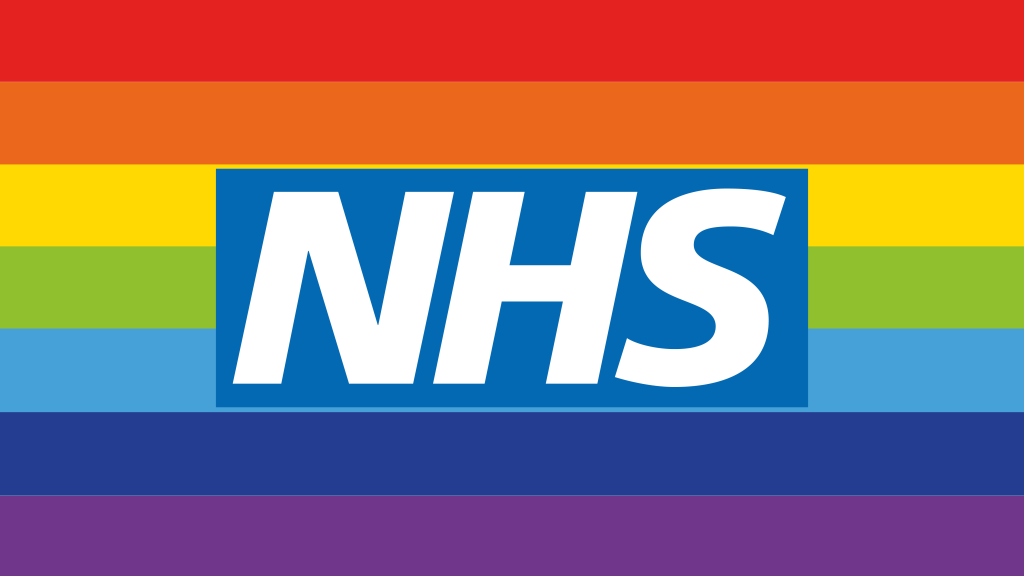

All parents are offered a thorough physical examination for their baby within 72 hours of giving birth.
すべてのご両親は、出産後72時間以内に赤ちゃんの徹底的な健康診断を受けることができます。
The examination includes screening tests to find out if your baby has any problems with their eyes, heart, hips and, in boys, testicles (testes).
この検査では、赤ちゃんの目、心臓、腰、そして男の子の場合は睾丸(精巣)に問題がないかどうかを調べるスクリーニングテストが行われます。
- What is the newborn physical examination?:新生児健康診断とは?
- How is the newborn physical examination done?:新生児健康診断はどのように行われるのか?
- What does the newborn physical examination check for?:新生児健康診断では何を調べるのか?
- Does my baby have to have the examination?:赤ちゃんは検査を受けなければならないのか?
- When will we get the results?:結果はいつわかるのか?
- イギリス【NHS】 新生児検診 Newborn screening
What is the newborn physical examination?:新生児健康診断とは?
The newborn physical examination is usually carried out in hospital before you go home.
Sometimes it’s done at a hospital or community clinic, GP surgery, children’s centre or at home. Ideally, both parents should be there when the examination is done.
新生児健康診断は、通常、帰宅前に病院で実施されます。
病院や地域の診療所、開業医院、児童相談所、自宅で行われることもあります。検査は両親揃って行うのが理想的です。
The healthcare professional doing the examination should explain what it involves. This could be a doctor, midwife, nurse or health visitor who’s been trained to do the examination.
Some parts of the examination may be a bit uncomfortable for your baby, but it will not cause them any pain.
検査を行う医療専門家は、検査がどのようなものかを説明する必要があります。医師、助産師、看護師、ヘルスビジターなど、検査を行うための訓練を受けた人が行います。
検査の中には、赤ちゃんにとって少し不快なものもあるかも知れませんが、痛みを伴うものではありません。
The aim is to spot any problems early so treatment can be started as soon as possible. Usually, nothing of concern is found.
If the healthcare professional doing the examination does find a possible problem, they may refer your baby for more tests.
この検査の目的は、問題を早期に発見し、できるだけ早く治療を開始できるようにすることです。通常、心配するようなことは何もありません。
もし、医療従事者が検査の結果、問題があると判断した場合は、さらに詳しい検査を行うよう指示されることがあります。
You’ll be offered another physical examination for your baby at 6 to 8 weeks, as some of the conditions it screens for can take a while to develop.
This 2nd examination is usually done at your GP surgery.
健康診断の中には、発育に時間がかかるものもあるため、6~8週目にもう一度健康診断を受けるように言われるでしょう。
この2回目の検査は、通常、かかりつけの病院で行われます。
How is the newborn physical examination done?:新生児健康診断はどのように行われるのか?
The healthcare professional will give your baby a thorough physical examination.
They’ll also ask you questions about how your baby is feeding, how alert they are, and about their general wellbeing.
Your baby will need to be undressed for part of the examination.
医療従事者は、あなたの赤ちゃんを徹底的に身体検査します。
また、赤ちゃんの授乳の様子や、警戒心、健康全般について質問されます。
赤ちゃんは、検査のために服を脱がなければなりません。
During the examination, the healthcare professional will also:
検査中、医療従事者は次のようなことも行います。
・look into your baby’s eyes with a special torch to check how their eyes look and move
・listen to your baby’s heart to check their heart sounds
・examine their hips to check the joints
・examine baby boys to see if their testicles have descended into the scrotum
・特別な懐中電灯で赤ちゃんの目をのぞき、目の様子や動きをチェックします。
・赤ちゃんの心臓の音を聞いて、心音を調べます。
・腰の関節を調べます。
・男の子の場合、睾丸が陰嚢に下りてきているかどうかを調べます。
What does the newborn physical examination check for?:新生児健康診断では何を調べるのか?
The examination includes an overall physical check, plus 4 different screening tests.
検査内容は、全体的な健康診断と4種類のスクリーニング検査です。
Eyes:目
The health professional will check the appearance and movement of your baby’s eyes.
They’re looking for cataracts, which is a clouding of the transparent lens inside the eye, and other conditions.
医療従事者は、赤ちゃんの目の外観と動きをチェックします。
目の中の透明なレンズが濁る白内障などを調べる為です。
About 2 or 3 in 10,000 babies are born with cataracts in one or both eyes that need treatment.
But the examination cannot tell you how well your baby can see.
1万人に2~3人程度の赤ちゃんが、生まれつき片目または両目に白内障があり、治療が必要とされています。
しかし、検査では、赤ちゃんの視力がどの程度なのかを知ることはできません。
Heart:心臓
The healthcare professional will check your baby’s heart. This is done by observing your baby, feeling your baby’s pulses, and listening to their heart with a stethoscope.
医療従事者は、あなたの赤ちゃんの心臓をチェックします。これは、赤ちゃんを観察し、脈拍を感じ、聴診器で心臓の音を聞くことによって行われます。
Sometimes heart murmurs are picked up. A heart murmur is where the heartbeat has an extra or unusual sound caused by a disturbed blood flow through the heart.
Heart murmurs are common in babies. The heart is normal in almost all cases where a murmur is heard.
But about 8 in 1,000 babies have congenital heart disease that needs treatment.
時には、心雑音が検出されることもあります。心雑音とは、心臓を通る血液の流れが乱れることによって、心臓の鼓動に余分な音や異常な音が出ることです。
心雑音は赤ちゃんによく見られます。心雑音が聞こえるほとんどの場合、心臓は正常です。
しかし、約1,000人に8人の赤ちゃんは、治療が必要な先天性心疾患を持っています。
Hips:おしり
Some newborns have hip joints that are not formed properly. This is known as developmental dysplasia of the hip (DDH).
Left untreated, DDH can cause a limp or joint problems.
About 1 or 2 in 1,000 babies have hip problems that need to be treated.
新生児の中には、股関節が正しく形成されていない子がいます。これは股関節の発達異形成(DDH)として知られています。
DDHを治療せずに放置しておくと、足を引きずったり、関節に問題が生じたりします。
1,000人に1人か2人の割合で、股関節に問題があり、治療が必要な赤ちゃんがいます。
Testicles:睾丸
Baby boys are checked to make sure their testicles are in the right place.
During pregnancy, the testicles form inside the baby’s body. They may not drop down into the scrotum until a few months after birth.
男の子の赤ちゃんは、睾丸が正しい位置にあるかどうかを確認します。
妊娠中、睾丸は赤ちゃんの体の中で形成されます。睾丸が陰嚢に降りてくるのは、生後数ヶ月後です。
Around 2 to 6 in 100 baby boys have testicles that descend partially or not at all.
This needs to be treated to prevent possible problems later in life, such as reduced fertility.
男児100人に2~6人の割合で、睾丸が部分的に下降していたり、まったく下降していなかったりします。
これは、生殖能力の低下など、後々起こりうる問題を防ぐために治療する必要があります。
Does my baby have to have the examination?:赤ちゃんは検査を受けなければならないのか?
The aim of the examination is to identify any of the problems early so treatment can be started as soon as possible.
It’s strongly recommended for your baby, but not compulsory.
検査の目的は、早期に問題を発見し、できるだけ早く治療を開始できるようにすることです。
この検査は、赤ちゃんのために強くお勧めしますが、強制ではありません。
You can decide to have your baby examined and screened for any or all of the conditions.
If you have any concerns, you should talk to your midwife or the healthcare professional offering the examination.
赤ちゃんの検査とスクリーニングを受けるかどうかは、あなたが決めることができます。
何か心配なことがあれば、助産師や検査を行う医療従事者に相談してください。
When will we get the results?:結果はいつわかるのか?
The healthcare professional who does the examination will give you the results straight away.
If your baby needs to be referred for more tests, they’ll discuss this with you there and then, too.
検査を行った医療従事者は、その場で結果を教えてくれます。
もし、あなたの赤ちゃんにもっと詳しい検査が必要な場合は、その場であなたと相談します。
The results will be recorded in your baby’s personal child health record (red book).
You’ll need to keep this safe and have it to hand whenever your baby sees a healthcare professional.
If you have any concerns, you can discuss them with your midwife or the healthcare professional who does the examination.
検査結果は、赤ちゃんの個人用健康記録(レッドブック)に記録されます。
この記録は大切に保管し、赤ちゃんが医療従事者に会うときはいつでも手元に置いておく必要があります。
何か心配なことがあれば、助産師や検査を担当した医療従事者に相談することができます。


コメント